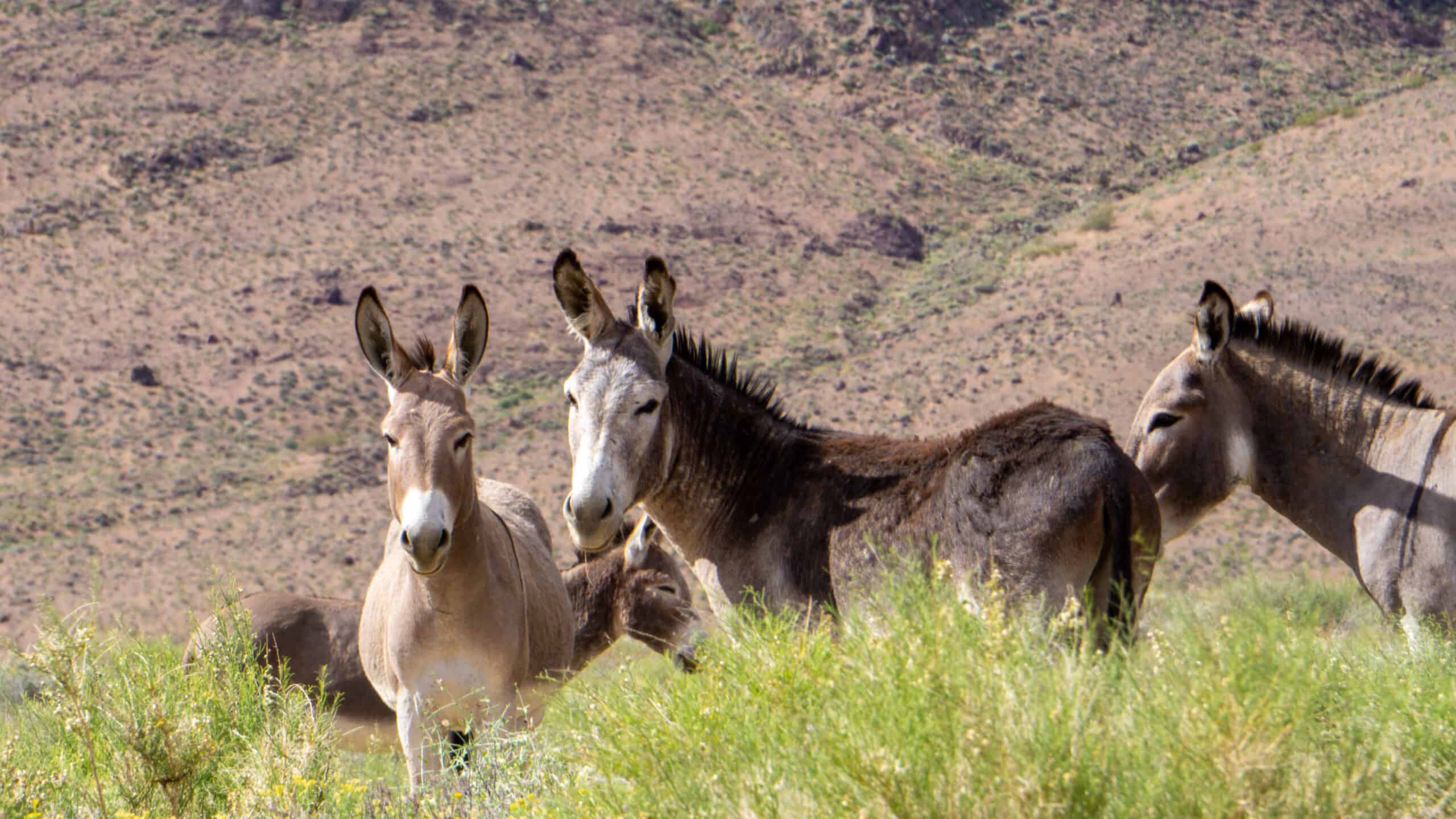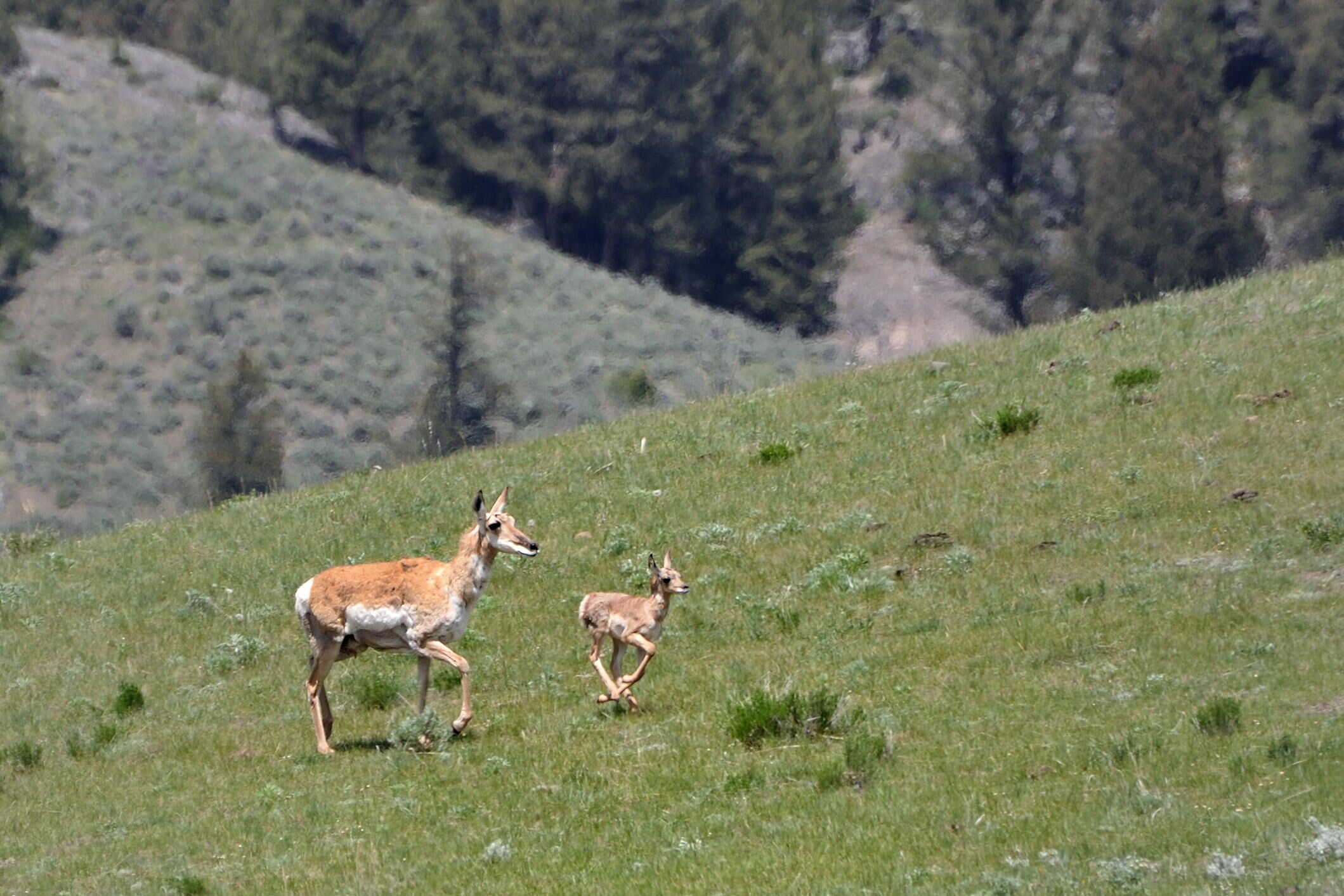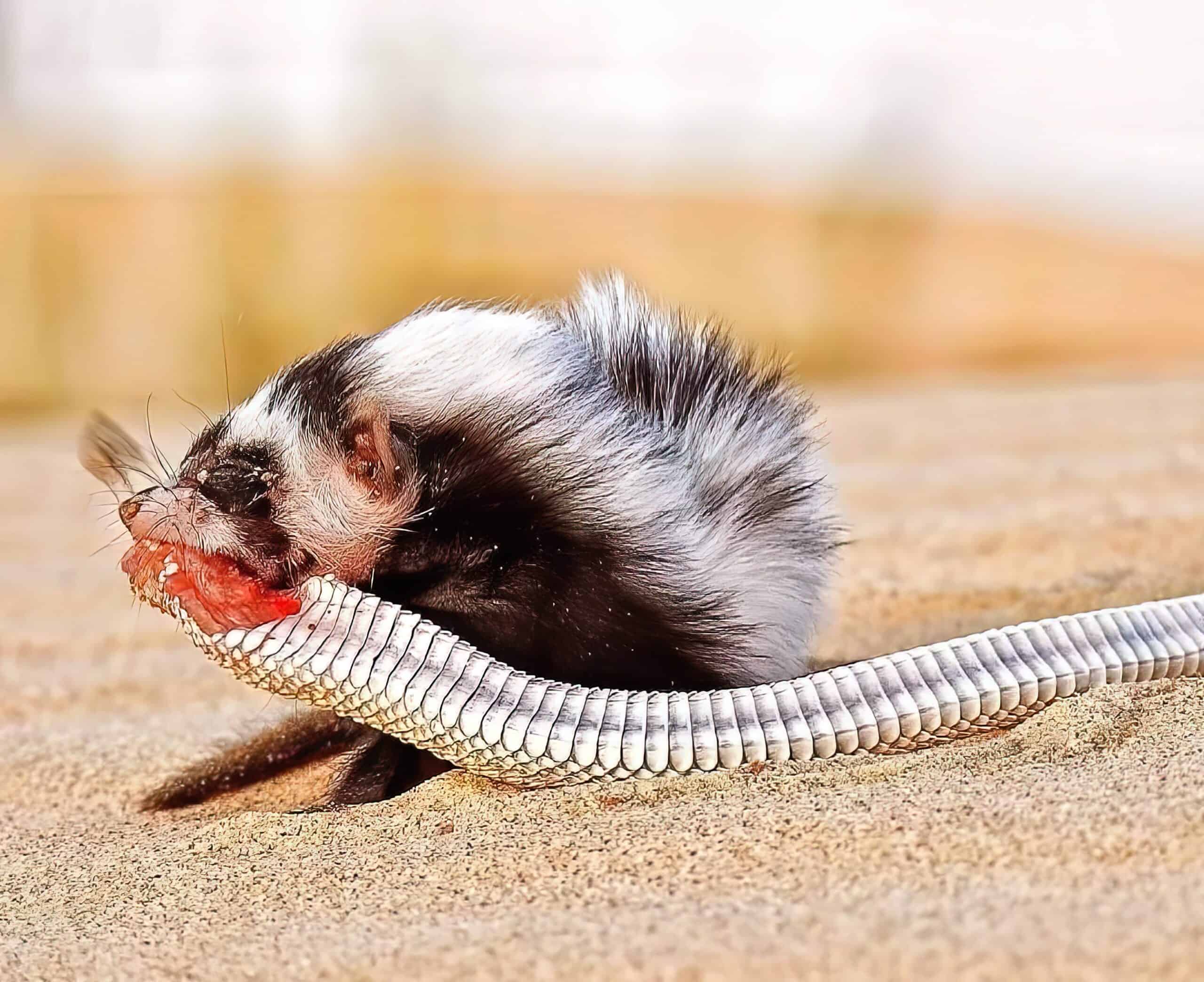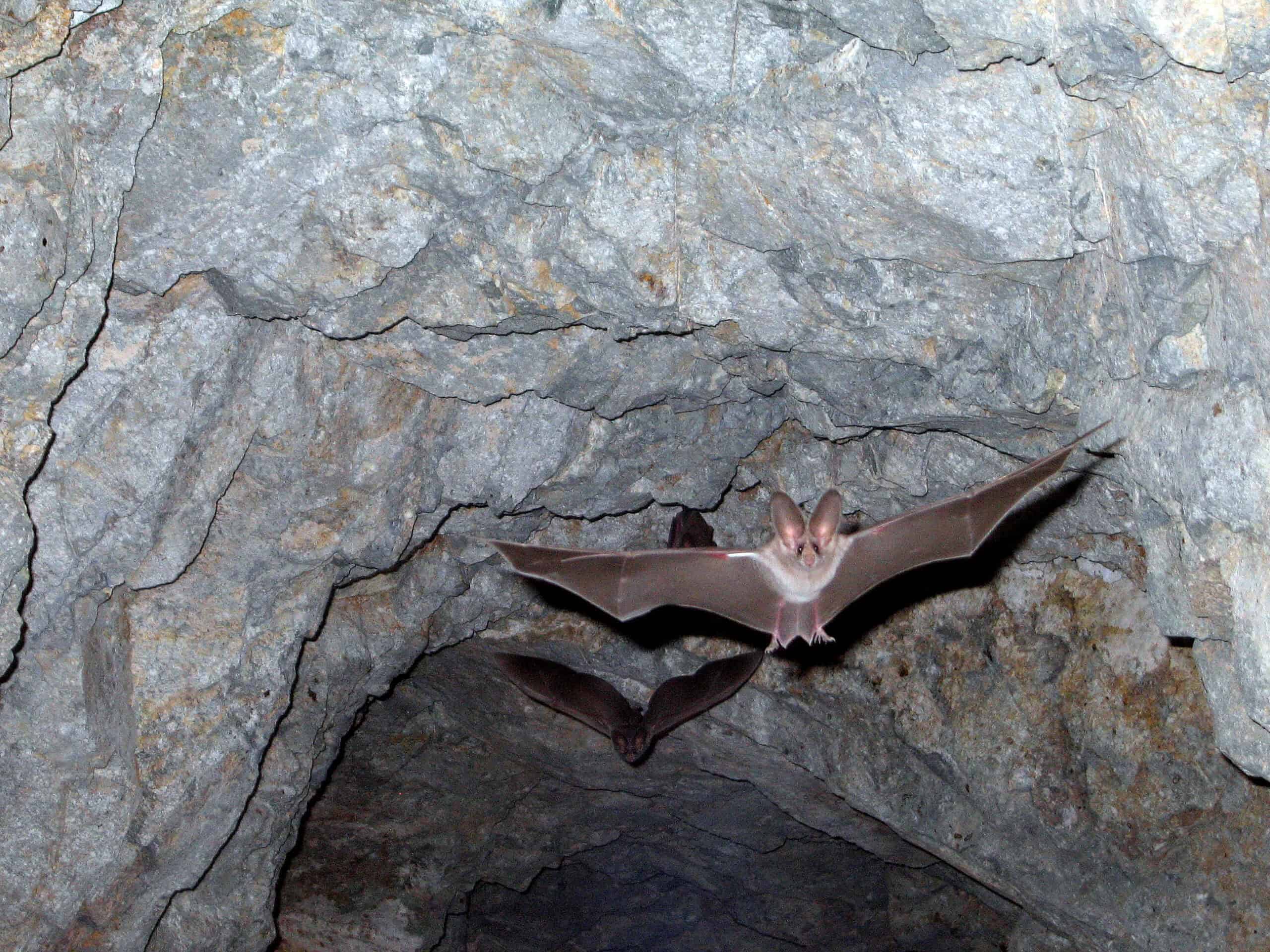Share this article
Wildlife Featured in this article
- cougar
- feral horse
- feral donkey
Do cougars affect ecosystems by preying on feral donkeys?
Donkey activity patterns may affect vegetation around desert wetlands
Erick Lundgren was conducting research on wetlands in the Mojave and Sonoran deserts when he began noticing evidence of cougars killing feral donkeys.
“It’s been widely claimed that wild burros don’t have predators,” said Lundgren, a lecturer at the Queensland University of Technology.
When he and his colleagues looked for the kills, they found drag marks leading them to hidden carcasses.
“Many of these wetlands were full of kills—cached donkey carcasses—closely associated with mountain lions,” Lundgren said. “[Cougars] like to drag their kills somewhere safe to eat them.”
The discovery prompted them to study how cougars (Puma concolor) affect the behavior of feral donkeys (Equus asinus), which, in turn, shapes the desert ecosystem. Their findings led to a controversial conclusion at odds with many wildlife managers, who view feral horses (E. caballus) and burros as invasive species that negatively affect the arid landscapes they inhabit. The burros may benefit some wetland ecosystems, they found, and cougar predation helped control the burros’ numbers, much as prehistoric predators that are long extinct controlled the ancient equids that once roamed the landscape.
“Cougar predation appears to rewire an ancient food web, with diverse implications for modern ecosystems,” they wrote in their study published in the Journal of Animal Ecology. “Our results suggest that protecting apex predators could have important implications for the ecological effects of introduced megafauna.”
Other recent research published in the Journal of Wildlife has documented cougars preying on feral horses in the Great Basin. But even there, they found cougars were unlikely to remove enough horses to reduce their damage to the arid landscape.
“It’s probably not going to be that panacea where cougars are out there limiting horse populations,” Jon Beckmann, a wildlife supervisor at the Kansas Department of Wildlife and Parks and one of that study’s authors, told TWS in a previous article.
Donkey politics
Feral donkeys and horses are a controversial topic in the West. Wildlife managers complain that the invasive species tramples and overgrazes natural vegetation, which has negative impacts on native wildlife. In its issue statement on feral horses and burros, TWS holds that thousands of years have passed since equids occupied these ecosystems, and a lot has changed since then.
“Since native North American horses went extinct, the western United States has become more arid, and many of the horses’ natural predators, such as the American lion and saber-toothed cat, have also gone extinct, notably changing the ecosystem and ecological roles horses and burros play,” the issue statement reads.
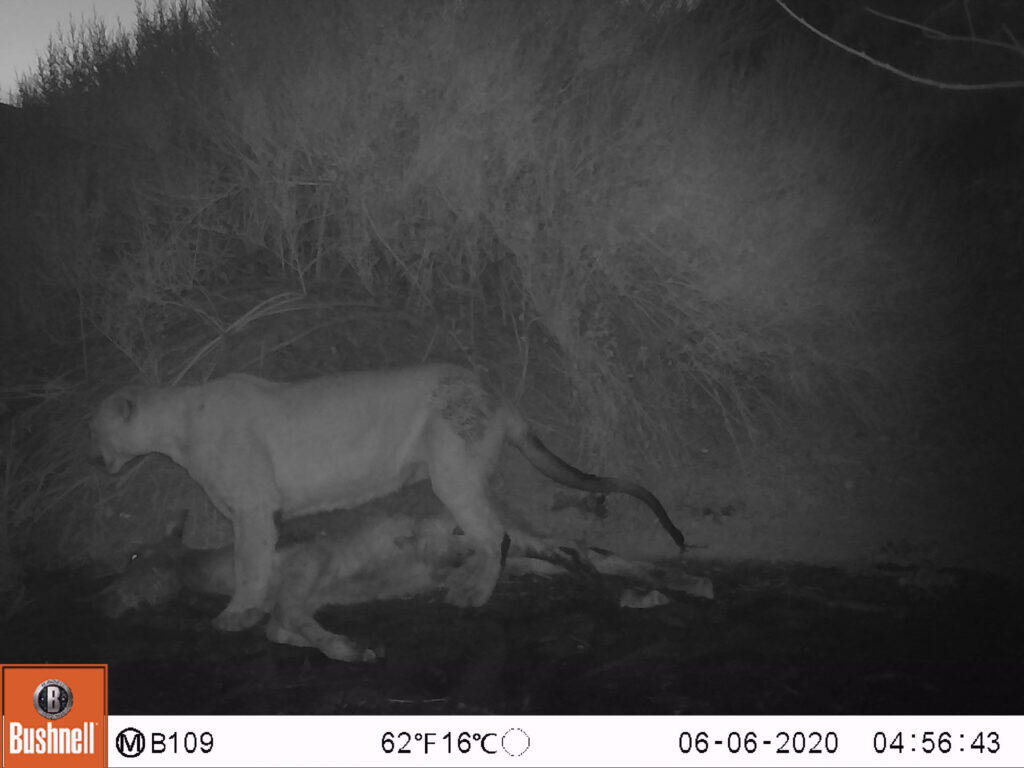
Lundgren believes cougars and feral donkeys could replicate some of these ancient roles, though. “Conservationists would benefit from recognizing the deep time histories of what we’re trying to protect,” he said.
In the study, Lundgren and his colleagues placed camera traps around wetlands to monitor a feral donkey population in Death Valley National Park in California. They compared areas that were closer to campsites—with higher levels of human activity and less cougar activity—with more remote areas that had more cougar activity. Overall, they placed 24 trail cameras at 17 wetland sites in 2018 and 2019.
Donkeys were more active during both day and night in the areas near campsites compared to the non-campsite areas, Lundgren said. But they were typically only active in more remote areas during the middle of the day when it’s harder for cougars to find cover to ambush their prey.
The researchers found that these differences in donkey activity also corresponded with different levels of browsing. In the wetlands where donkeys were more active, they browsed and trampled vegetation more, leaving behind trails. In areas with more cougar activity, they trampled less. But in this case, the vegetation trampling could be beneficial, they found, keeping invasive plant species like phragmites in check and opening up water sources for species like bighorn sheep (Ovis canadensis).
“The donkeys actually keep these wetlands open, and a lot of species seem to rely on this,” Lundgren said.
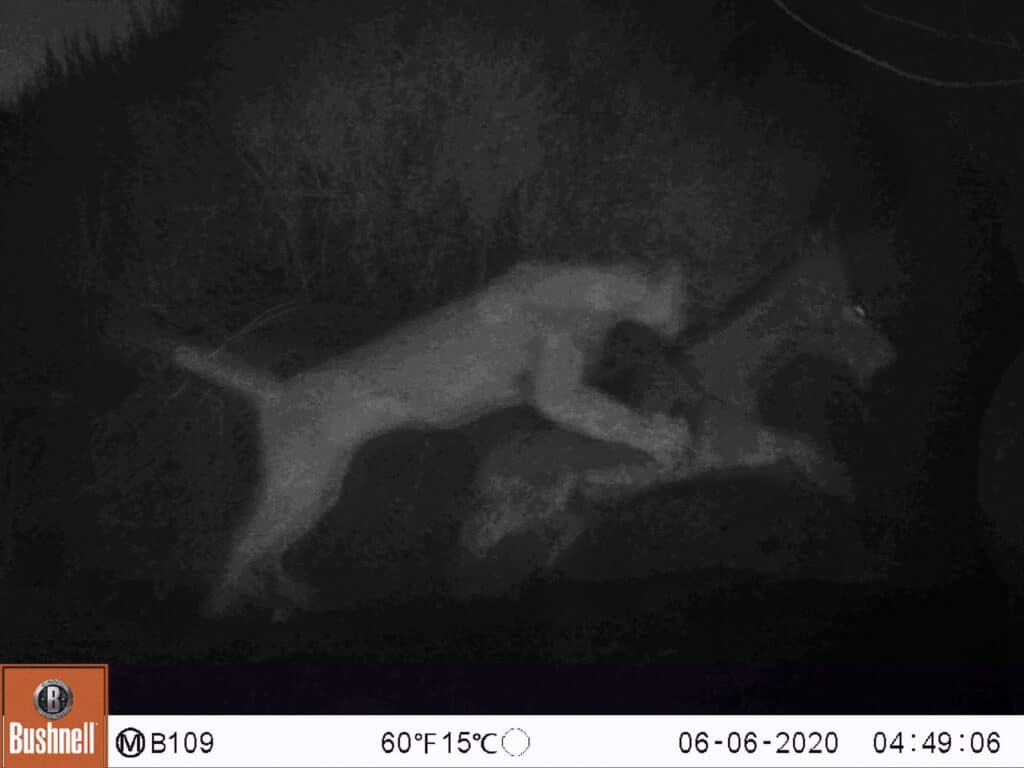
Problems with the bigger picture?
Other researchers are skeptical, though. TWS member Esther Rubin, research branch chief of the Arizona Game and Fish Department, agrees that cougars prey on feral donkeys. “No arguments there,” she said. Researchers have documented it since the 1970s.
But she’s leery about Lundgren’s paper. The authors didn’t address the possibility that humans made some of the trails the authors mention, trampling vegetation at wetlands closer to campsites, rather than the donkeys.
The paper didn’t provide details on how the areas were surveyed, she said. Caches can be hard to find, and not always located near trails—the researchers could have missed some, she said.
She also said that the paper didn’t specify when the camera data were collected, which is important because both donkey habitat use and daily activity patterns may vary by season.
Overall, Rubin said, the researchers seem to extrapolate a lot without presenting convincing data.
“They have made very wide, speculative conclusions,” she said.
Header Image: Feral donkeys have moved into various parts of the southwestern ecosystems since their introduction. Credit: Michael Alfuso



